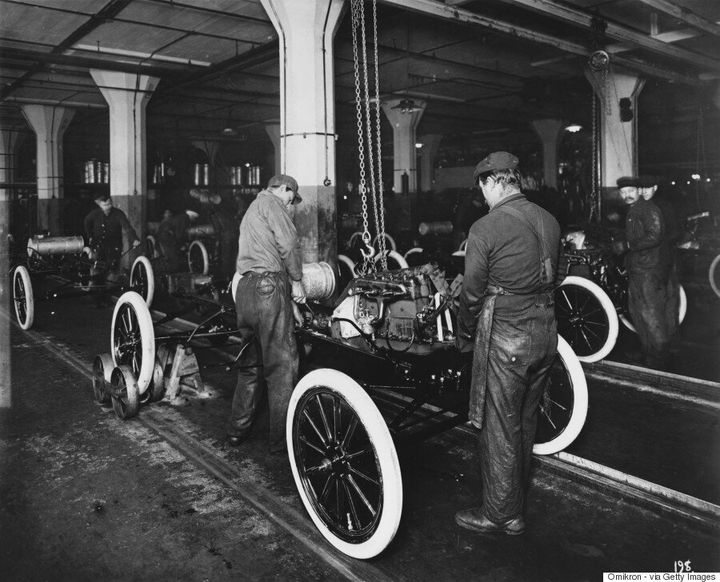Manufacturers need to be agile and efficient to be competitive. Today, the most successful companies are the ones who leverage the best available technology. But like any industry, manufacturing technology is constantly evolving to provide more value on the shop floor. Deciding which technology to implement can be overwhelming – especially since the technology of the past can’t solve the challenges of the future. To help manufacturers understand which technologies are here to stay, and to learn from past innovations that forever changed the industry, we review the four pivotal moments that have changed the way we make things, presented in partnership with Cisco.
Age of Steam
The Industrial Revolution — the era in which machines changed the way people made things — wouldn’t be possible without technological advancement. In this case, it was the creation of the steam engine. Prior to this, manufacturing was a household activity, accomplished using hand tools or rudimentary machines. While early mills operated using wind or water power, the development of the steam engine made it possible to develop a factory virtually anywhere. This kicked off an era of collaboration and a move to special-purpose machinery and mass production in factories, mills, and mines. This initiated a bold new technological phase of productivity and efficiency.

Age of Mass Production
With the steam engine came the ability to produce things in large quantities. Mass production methods — establishing a production system by using physical labour to design, produce, and assemble standardized parts — quickly become a way of life. But it was American innovator Henry Ford who revolutionized mass production with his development of the assembly line for the Model T automobile in the early-1900s. In this system, every worker was given a specific task and built upon each other’s work to create a vehicle, section by section. It kickstarted the industrial complex and was the advent of modern mass production.
Age of Automation
The mid-1950s saw the rise of automation and the information age. Advances in computer science translated into the creation of large-scale, high-speed computing machines. The first of its kind was the Univac 1101 or ERA 1101 -- a massive machine that used vacuum tubes, console typewriters and magnetic tape to compute.
By the end of the 1950s, the creation of the transistor transformed the industry. Manufacturers could now replace costly, inefficient vacuum tubes in computing equipment. This meant the early bulky computer machines could be developed into smaller, compact devices that were more efficient. Most importantly, the information age ushered in an innovative workforce, one that used automation and computerization to help boost productivity, develop products faster and heighten consumer consumption by changing the way we accessed, presented and manipulated information.

Age of Cyber-Physical Systems
The current and future manufacturing age is upon us with the rise of the cyber-physical system (CPS). Also referred to as the era of Internet of Things (IoT), the “connected factory" or Industry 4.0, it’s a technology that allows machines to talk to each other over a secure IT network. That data conversation makes manufacturers more efficient by presenting information, in real time, which allows them to make data-based decisions.
Take the brewery industry, for example. An independent brewery understands that a particular recipe for making beer is most popular — transactions from the point-of-sale systems tell us this. Using Cisco connected devices and networks, the brewery can quickly determine that the beer recipe requires a certain type of barley seed and how much of the ingredient is in inventory— all because the backroom processes are able to swiftly communicate this data via IoT technology. By way of CPS and IoT manufacturing, decision makers not only know to order more barley seed but they can also automate this process — boosting overall equipment effectiveness (OEE), security, network uptime and worker productivity.
Looking back, the manufacturing sector has indeed come a long way. But to be a success in today’s sector, organizations are looking at how IT networks and IoT devices on the plant floor — including Cisco systems embedded sensors and networking —can assist in streamlining physical processes and improve product and service delivery now and in the future.